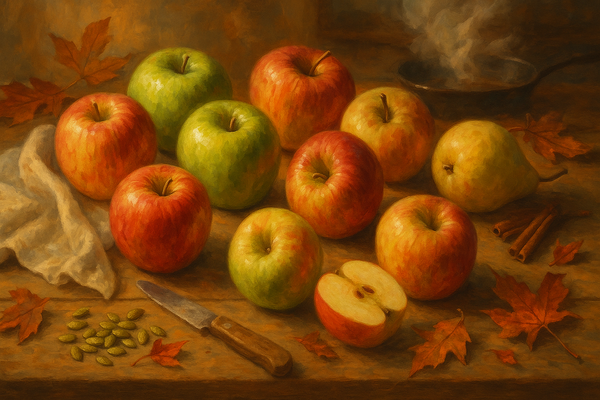
The Familiar Fruit with More to Say
Every fall, apples return like a season’s punctuation mark: crisp, dependable, everywhere.
They fill markets and countertops, bowls and pockets, each one promising something different but comfortingly familiar.
But somewhere between the orchard and the oven, we stopped paying attention. We turned them into background noise — filler for pies, default snacks for lunchboxes. The truth? Apples can do much more. Their mix of sugar and acid makes them one of the most adaptable ingredients of the season, a bridge between savory and sweet, crisp and soft, nostalgia and new ideas.
If fall cooking is about depth and warmth, apples are the contrast that keeps everything alive.
The Taste of Balance
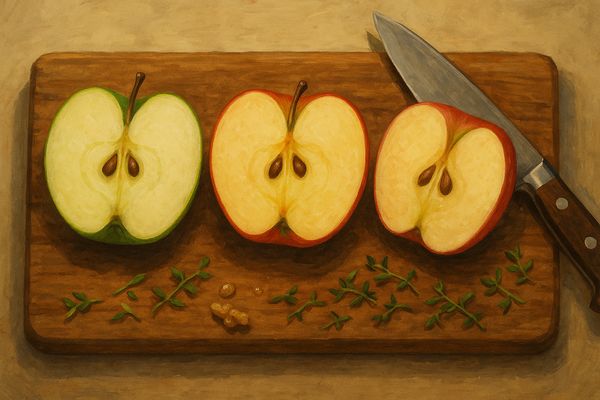
An apple is a small study in opposites: sweet and tart, firm and soft, predictable and surprising.
Each variety has its own rhythm. A Granny Smith will make roasted vegetables taste sharper; a Honeycrisp can brighten a slaw like lemon; a mellow Pink Lady melts into butter when sautéed.
That duality is gold in the kitchen. Apples don’t dominate. They listen. They let salt and fat, herbs and vinegar, show off. A good apple in a dish works like punctuation: subtle, necessary, easy to miss until it’s gone.
Quiet truth: The best cooks use apples not as fruit, but as balance.
Beyond the Pie Dish
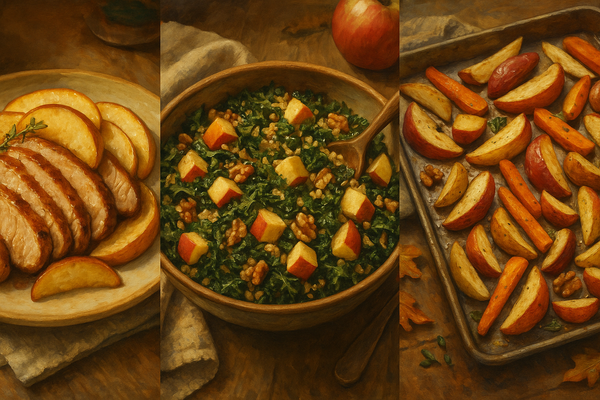
Pie will always be home base. But apples deserve a chance to move beyond the crust.
Sautéed beside pork, they absorb salt and fat until they taste almost meaty.
Thin slices in a farro salad add crunch and lift, an edible version of a good mood.
Roasted wedges tucked next to carrots or chicken bring quiet sweetness that rounds out the meal.
The goal isn’t to make dinner taste like dessert. It’s to use apples as seasoning, a spark of contrast in something earthy, rich, or slow-cooked. When you add apple to a savory dish, you’re not sweetening it. You’re sharpening it.
Lived-in insight: The apple isn’t there to stand out. It’s there to make everything else make sense.
The New Comforts
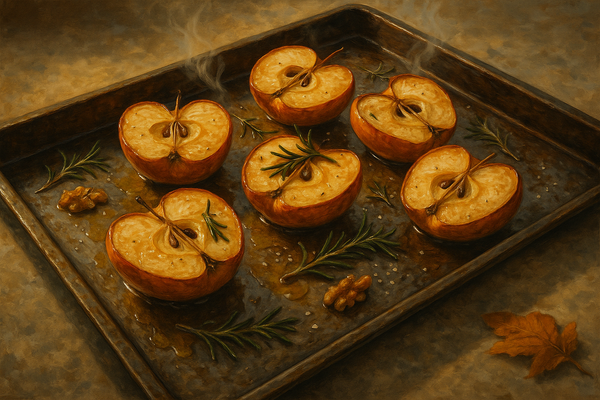
There’s comfort in watching an apple change with heat — the skin loosening, the scent deepening, the air turning syrupy with sugar and spice. But comfort doesn’t have to mean repetition.
Try roasting halved apples with olive oil, salt, and rosemary: no cinnamon, no sugar, just restraint.
Or simmer them into a sharp compote with cider vinegar and shallots, something you can spoon over chicken, pork, or a bowl of lentils on a gray night.
The best fall apple recipes aren’t nostalgic; they’re curious. They ask, what else can this fruit do once the cinnamon is set aside?
Kitchen truth: if your apples make your kitchen smell good before they even hit the oven, you’re doing it right.
Choosing the Right Apple for the Moment
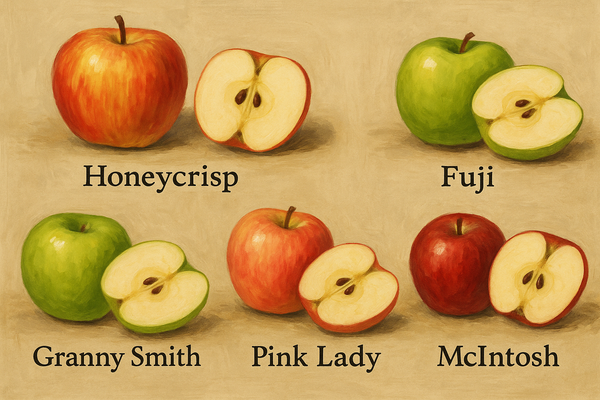
Not every apple suits every purpose. Here’s how to think about it without turning it into homework:
- For roasting: Fuji, Pink Lady, or Honeycrisp — firm enough to hold shape, sweet enough to caramelize.
- For sauce or baking: McIntosh, Cortland, or Gala — they give in easily, collapsing into smooth comfort.
- For salads or slaws: Granny Smith or Jazz — bright, crisp, and resistant to browning.
Cooking with apples is less about recipe and more about reaction. You’re paying attention to texture, to how the fruit behaves under heat or acid. The trick is to let the apple tell you what it wants to be.
Observation: apples are like people: some handle pressure better than others.
Apples in Savory Cooking: Small Shifts, Big Payoffs
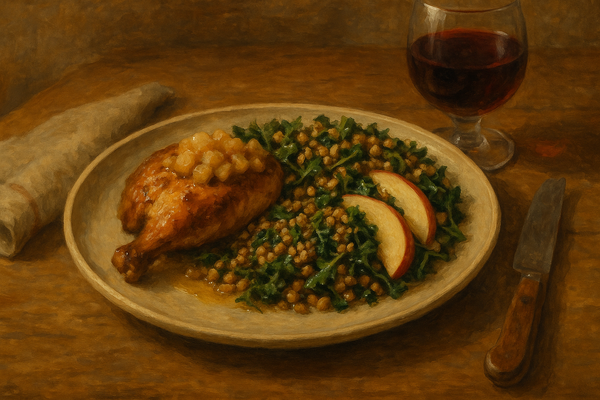
Apples bring something rare to the table — the power to soften heaviness without stealing focus.
Try folding them into dishes that need brightness:
- Grain salads: Dice them small so they feel like part of the grain, not a topping.
- Sheet-pan dinners: Roast them right beside onions and root vegetables. They’ll glaze everything as they caramelize.
- Savory tarts or sandwiches: Use thin apple slices with sharp cheese and mustard. It’s the bite you didn’t know you were missing.
Even leftover roasted apples can surprise you. Toss them with arugula and toasted nuts the next day and call it lunch. It’ll taste like you planned it.
Conclusion: What Apples Teach About the Season

Fall is often described as cozy, but it’s really about contrast, warm air against cool nights, sweetness balanced by earth. Apples carry that truth better than most ingredients.
They remind you that something can be both sharp and soft, both common and surprising.
That comfort doesn’t have to come from repetition. It can come from curiosity.
When you cook with apples this season, don’t reach for the pie dish first.
Cut one open, taste it raw, roast it in something unexpected.
You’ll find that the most familiar fruit still has new things to say.
